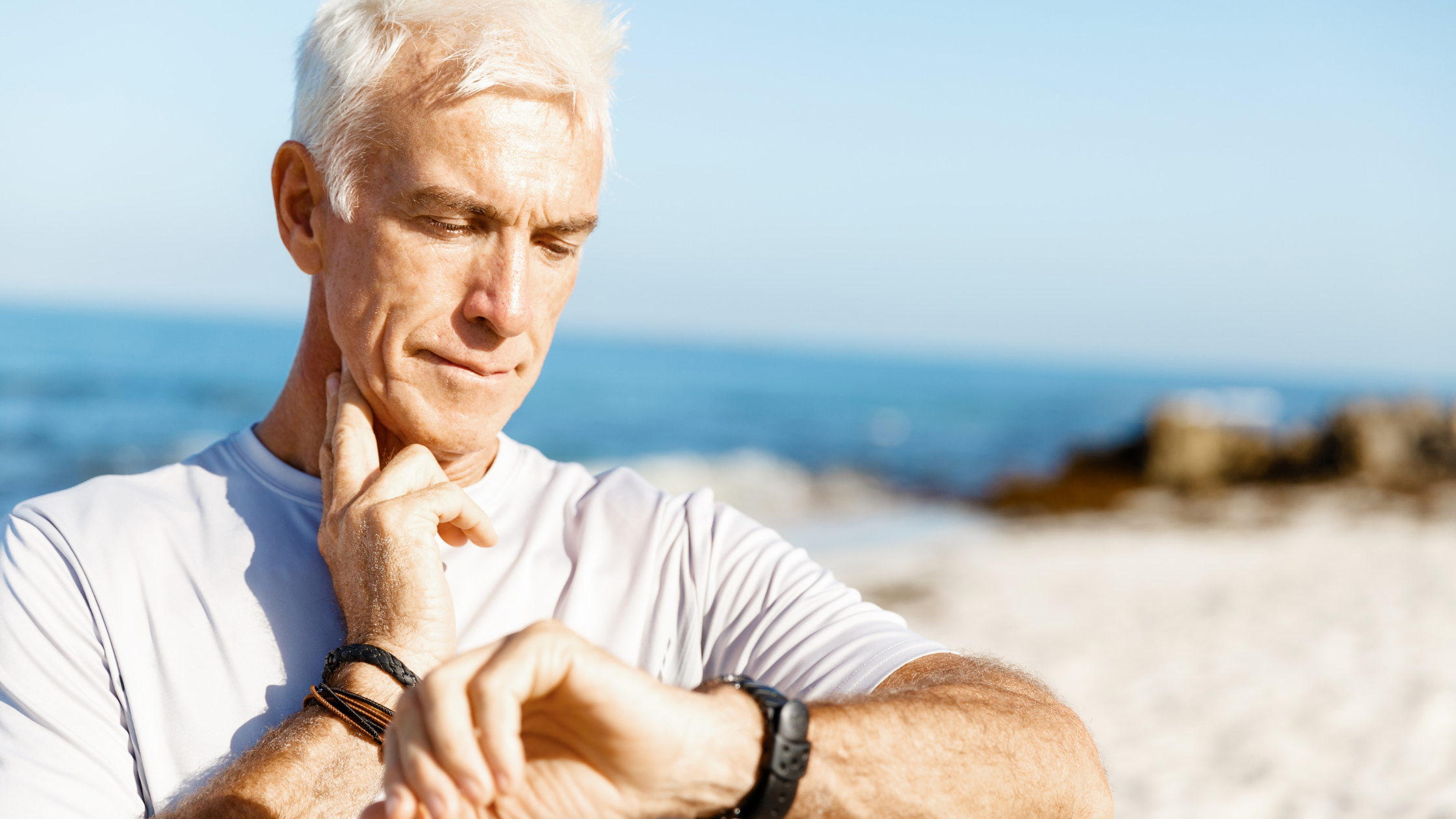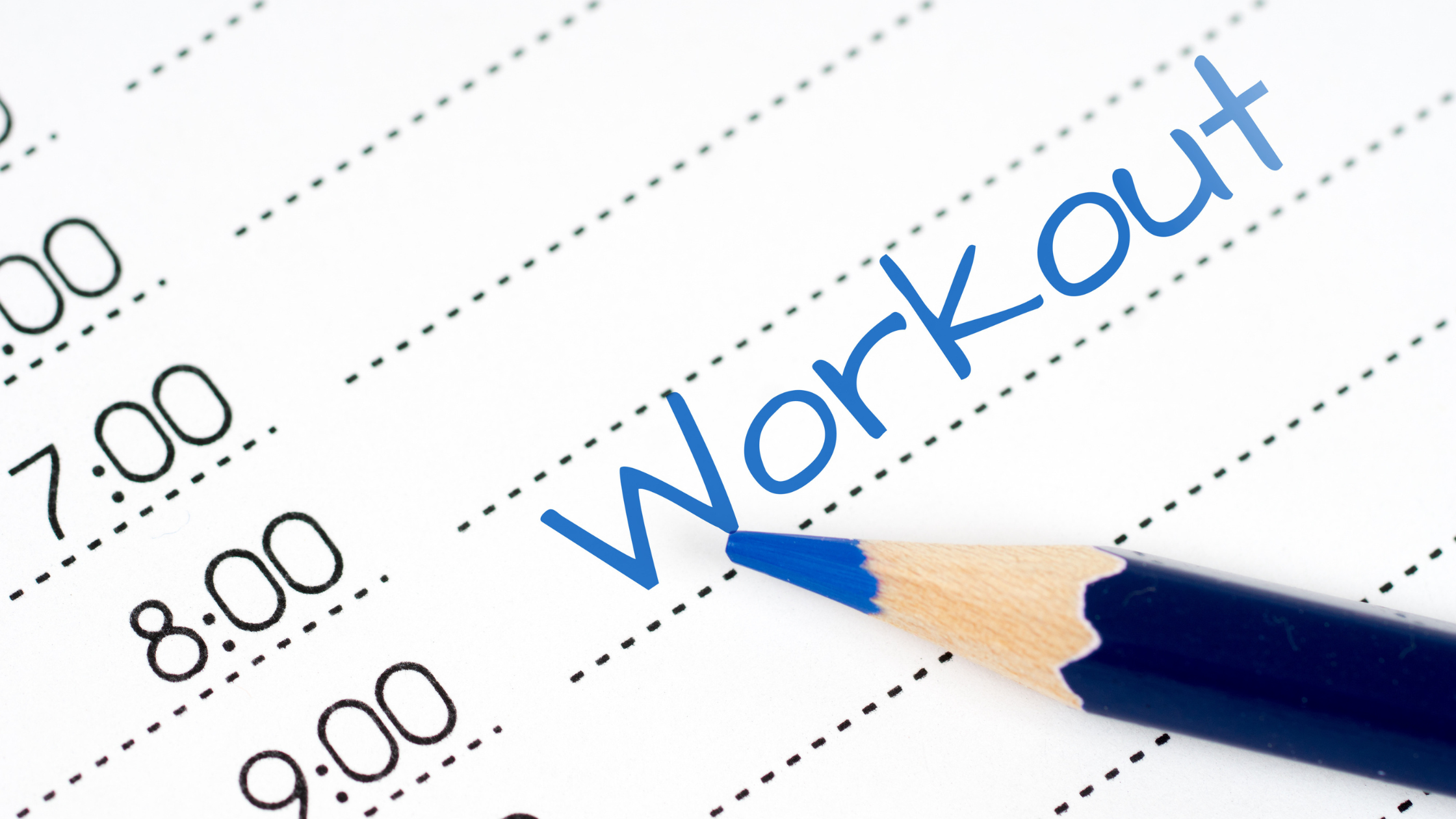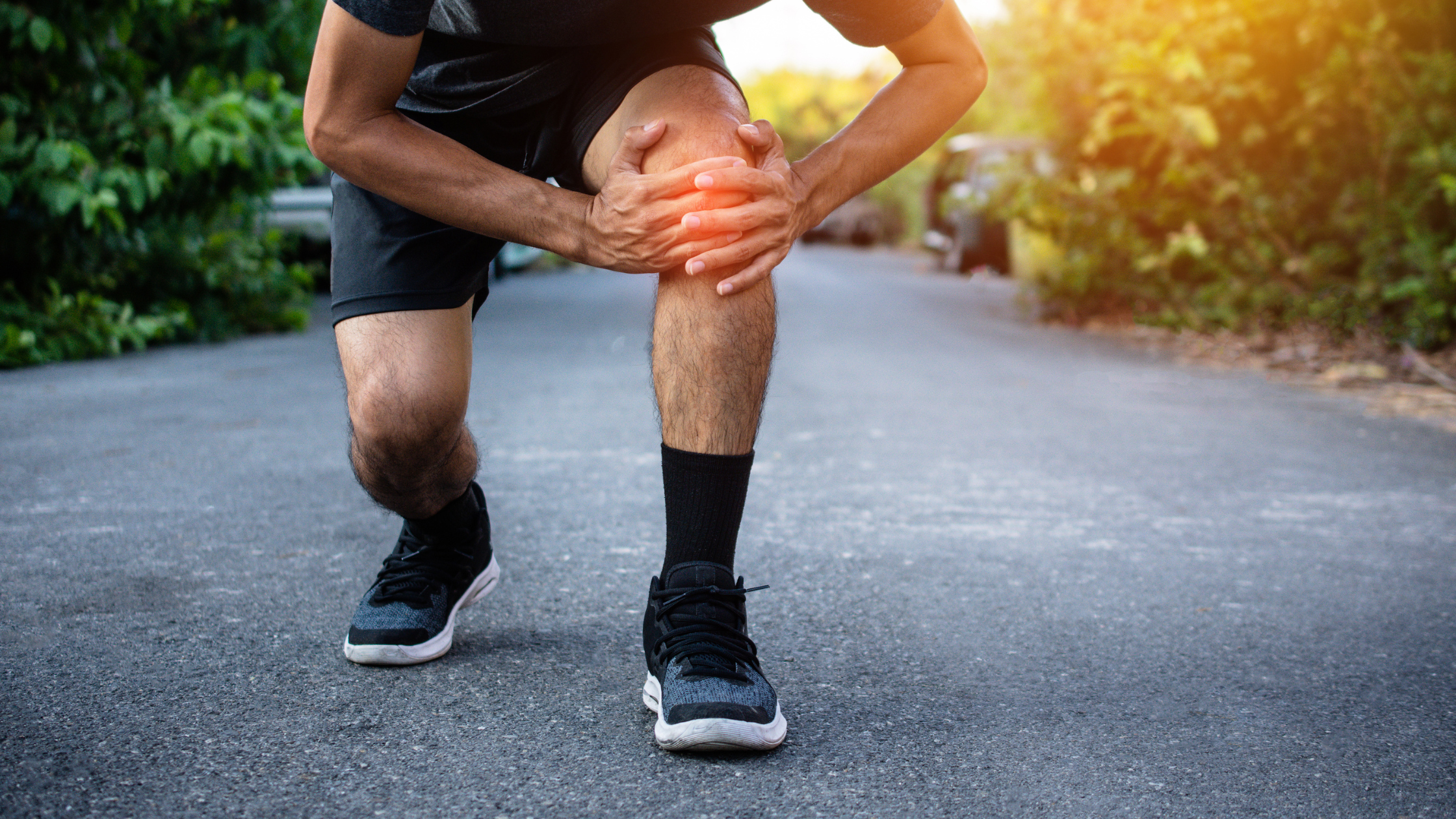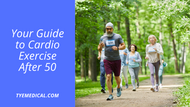Your Guide to Cardio Exercise After 50
Written by TYE Medical on Jul 24th 2023
You might inwardly groan when your doctor suggests more cardio exercise. But it’s sound wisdom. Maintaining a sedentary lifestyle is the quickest way to declining health as a senior adult. When you become inactive and withdraw socially, you’re far more likely to see a sharp decrease in overall wellbeing and physical health.
Those seniors who stay active, intentionally exercise, and engage socially can slow physical and even mental decline. And after 50, you become more concerned about heart health. While it’s true that you should be proactive about cardiovascular health well before turning 50, it’s not too late to start taking steps toward improving your lifestyle habits and boosting heart health.
Of course, a low saturated fat, low carb diet with lots of produce daily, (such as the Mediterranean diet), is a key factor in cardiovascular health as you age. But what is perhaps even slightly more important is daily cardio workouts. This is your guide to the why, what, when, and how of cardio exercise after 50.
Why Do Senior Adults Need Cardio Exercise?

We’ve stated that cardio and physical activity in general prevent a sedentary life and keep your physical health from declining. But why?
A sedentary lifestyle means you spend most of your time sitting and engaging in little to no activity. It impacts overall health while also decreasing mobility and balance. But being more active can help you prevent chronic illnesses like:
- Type II diabetes
- High blood pressure
- Rapid muscle loss
- Cancer
- Alzheimer's
- Osteoporosis
You might think that losing balance and coordination wouldn’t be such a big deal. But losses in these areas usually progress, and you may eventually lose independence if you become a fall risk or can’t perform routine tasks for yourself. As you age, maintaining independence becomes a primary goal.
You’ll also find that improved energy and better quality sleep are two additional bonuses to increased activity. These are two areas many seniors struggle with, and a boost for energy and sleep is a big win.
Cardio Exercise for Improved Mental Health

We mentioned that regular exercise can help prevent Alzheimer’s disease and maintain cognitive function. But it also helps sustain general mental health. Routine exercise helps reduce stress, improves sleep, boosts mood, and increases your energy levels. Each of these benefits has a positive effect on your overall mental state. This can help ward off things like anxiety and depression, which become increasingly common as people age.
Exercise can help protect you from developing Alzheimer’s, because it stimulates your brain, triggering neuron production in brain regions that are responsible for memory formation. Exercise can be key to mental health, especially as you push past 50.
What Is Cardio Exercise?

Cardio (also known as aerobic exercise) should be your primary exercise focus. But what is cardio? It is any exercise that raises your heart rate into your target heart rate zone where you burn the most fat and calories. It also requires a constant flow of oxygen. This is largely based on your age and the expected capacity of a healthy heart. Your target heart rate zone is 50-85% of your maximum heart rate. Find your age and target zone in the chart below.

You can wear a heart rate monitor or use a smart watch while you exercise. If you are below your target heart rate zone, it means you're not receiving much cardiovascular benefit from your activity. While any movement is better than none, for heart health, you want to be sure that you are actually giving your heart a work out–but not too much of one.
Talk to your doctor about your heart health and if your heart is healthy enough to exercise in your target heart rate zone.
What Are Types of Cardio Exercise for Seniors?

By far, brisk walking is the most accessible and popular form of cardio exercise for seniors. You can walk outside, with friends, or use an indoor treadmill in the comfort of your own home. Most senior living communities have sidewalks for outdoor walking or a fitness center with treadmills.
Walking is something almost anyone can do. You can multitask by listening to music or an audiobook as you walk. Many seniors enjoy walking with friends while engaging in breathless conversation. If you can easily talk without being winded while you walk, then you need to pick up the pace.
Aside from walking, some seniors enjoy cycling, water aerobics, and aerobics classes. These are all exercises that will drive up your heart rate and maintain it through the workout. Some household chores like vacuuming, mowing, raking leaves, or similar activities also count as cardio. But you usually don’t spend a half hour vacuuming the house in one day, so these aren’t always reliable forms of cardio exercise. But they can be a start.
If you have joint problems and find that even walking irritates arthritis, you can try using cardio equipment like an elliptical machine, which has no impact on joints. Water aerobics or cycling would also be great options.
How Often Do Seniors Need Cardio?

The Center for Disease Control recommends at least 150 minutes per week of moderate-intensity cardio. Typically, you would divide this so that you are engaging in cardio exercise 30 minutes per day, 5 days per week. Some seniors may find it more manageable to divide the 30 minutes into 2 15-minute sessions per day. You could take a 15 minute walk in the morning and another 15 minute walk at night. Or, you could incorporate another cardio activity.
If you engage in vigorous-intensity cardio that includes activities like running, hiking hills, and jogging, then you would only need to exercise 75 minutes per week for heart health.
How can you tell if your workout is moderate or vigorous? You’ll be slightly breathless during a moderate workout, but you can still talk. It’s much more difficult or impossible to talk during a vigorous workout. This is because you’re requiring lots more oxygen to sustain your activity. You don’t have any to spare for conversation.
If you’re concerned about maintaining muscle mass, the CDC also recommends 2 days of strength training per week.
Cardio Workout Mistakes to Avoid After 50

Pushing Through the Pain
It’s possible to overdo it, especially if you’ve got weight loss goals or a go-getter personality. But there comes a point when you might be doing too much. If this happens, your body will let you know, and you must pay attention. It’s okay to rest a day when needed or to slow down when your workout seems more difficult than usual.
And definitely don’t push for moderate or vigorous cardio seven days per week. But sure to get a day of rest. Maybe take a leisurely stroll instead or do something just for fun without being concerned with heart rates and calories.
And definitely don’t keep going when your body is in pain. If your knees or back start aching, don’t push through it. It might seem admirable at the moment, but you could do real damage to your body. And what will THAT do for your workout routine?
Here are three signs you’re over exercising:
- Feeling exhausted all the time
- Feeling depressed or anxious (if this is typical for you)
- Having trouble sleeping or waking up feeling tired in the morning
It’s possible that you’re already familiar with these symptoms. But if they’re worse rather than better as you increase the intensity or frequency of your workouts, then try backing off. It’s possible you are overdoing it.
Skipping the Warmup and Cooldown
When you’re short on time, it can be tempting to just skip the intro and conclusion and just get right to it. And while this isn’t advisable at any age, it’s especially problematic over age 50. This is the time when your body needs that warmup and cooldown the most.
Warmup increases blood flow to your muscles and joints, which helps prevent injury. It’s like not lubing gears before cranking them–movement and flow are hindered. If you want to be sure you can continue your workout routine for the long haul and avoid pain, don’t forgo the warmup before diving into your routine.
But warmups do other important things too, like increasing your body temperature and breathing rate, both of which help prepare your heart. In a sense, it’s like warming up your heart, getting it ready to start pumping at a quicker pace. Otherwise, it’s a jarring, sudden change in heart rate that can make the workout tough in the beginning. Give your heart some transition time.
Cooldowns help bring blood flow and heart back into normal range before you go with your day’s activities. This can be an important time of regrouping for your body, so don’t miss it.
Don’t Wait: It’s Time to Start Your Cardio Exercise Routine

Once you’ve cleared your activity with your doctor, it’s time to get started. Why wait? You can start small and ease into a full schedule. Try different exercises, different times of day, and even try splitting up the time into two sessions if you think that’s best for you.
But the point is that you begin somewhere. Cold and rainy? You can do online cardio workouts or go mall walking with a friend. It’s also easy to find used treadmills online or for sale locally. You can also invest in a new treadmill if you think that’s your best option for getting in your cardio and boosting your health.
Concerned about bladder leaks? It’s not uncommon for women over 50. It’s called stress incontinence. It’s still possible to exercise without embarrassment. Check out our article: Exercising with Stress Incontinence: How to Beat the Leaks!


